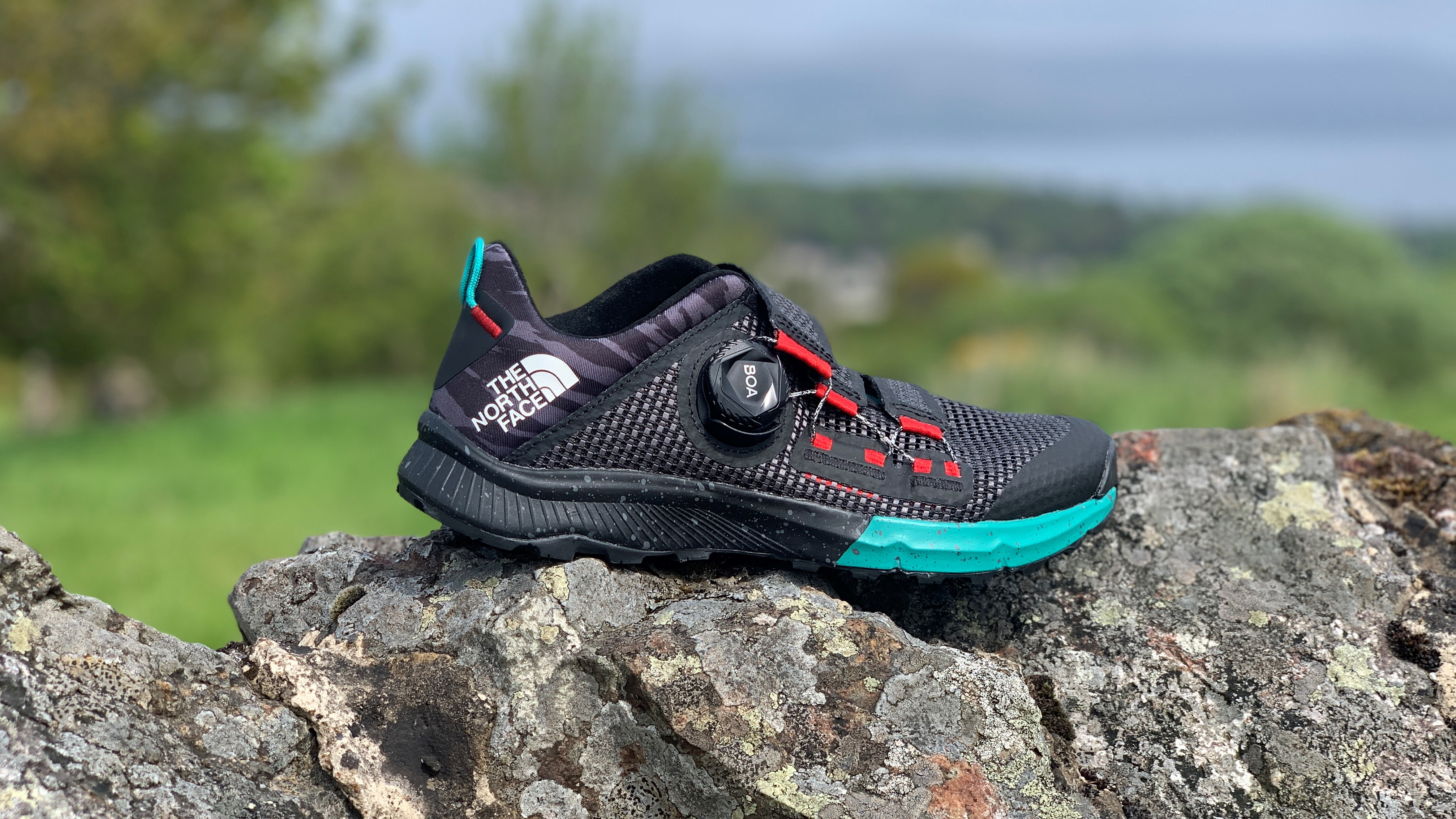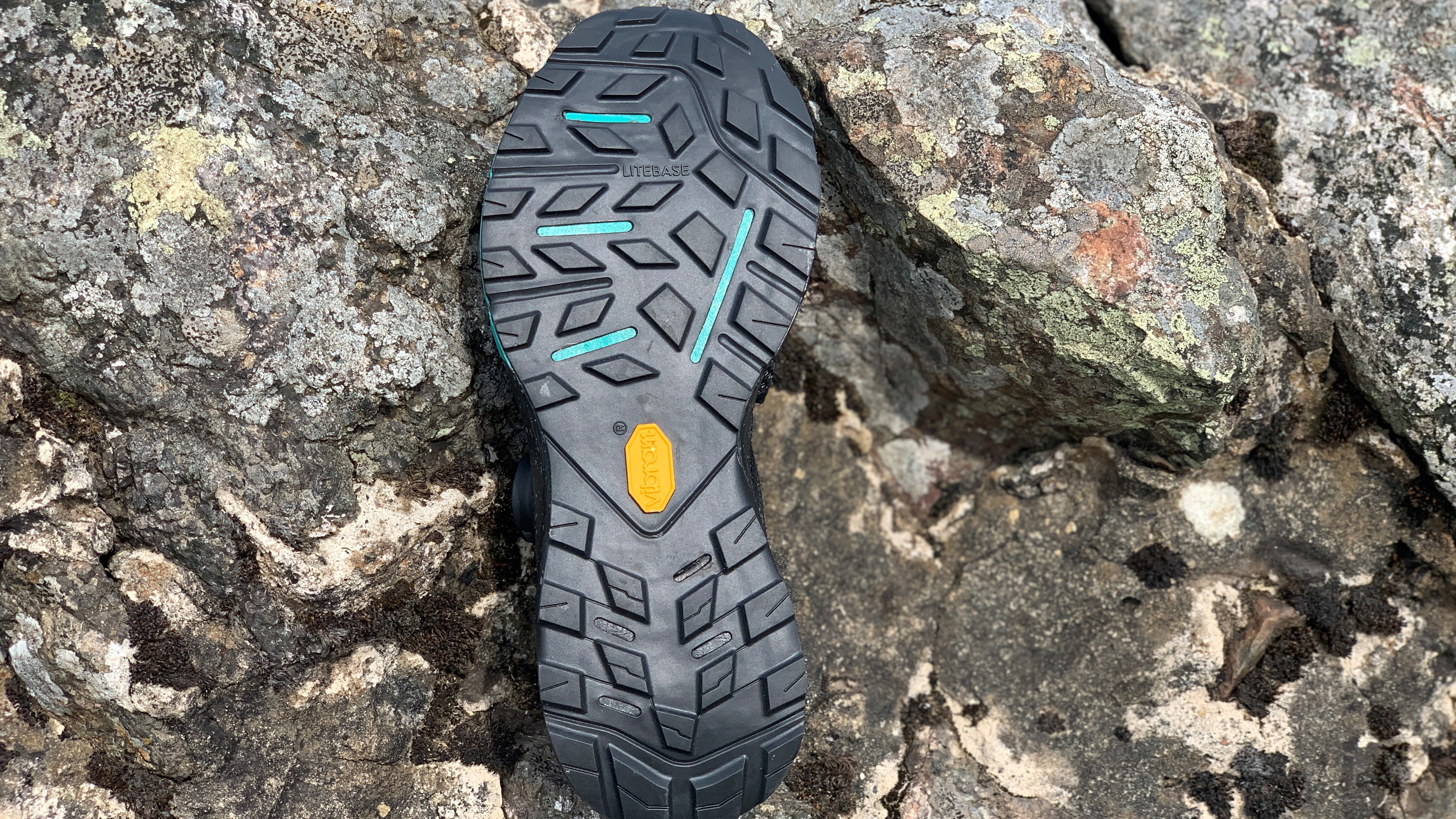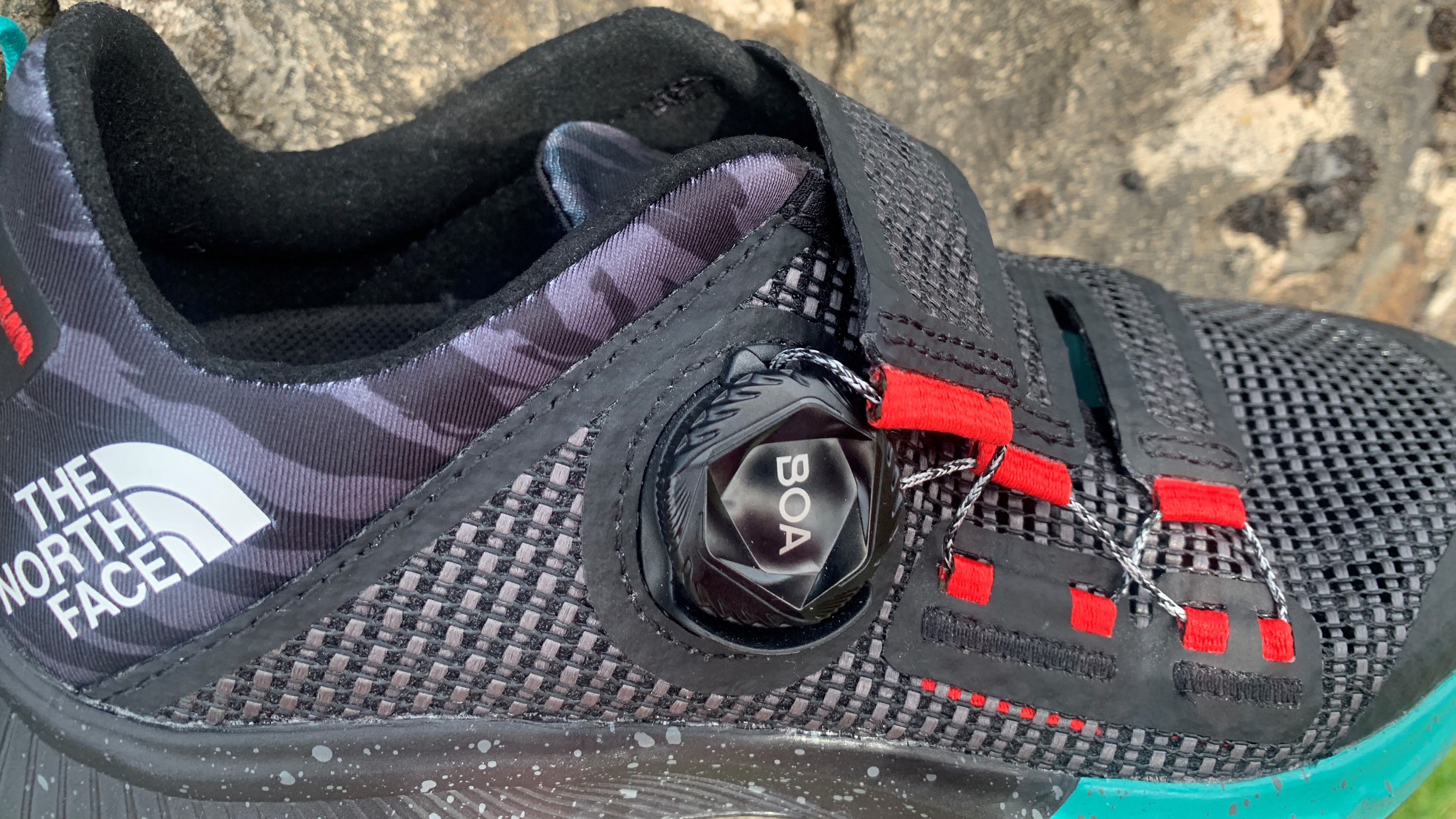
The North Face Summit Cragstone Pro Shoes: first impressions
When your hikes look more like scrambling than walking or you’re crossing rocky terrain to reach your favorite crag, you need something that’s in between the bulkiness of a hiking boot and the ballet slipper of a climbing shoe. These approach shoes are built to fit that bill with a lightweight but technical design that takes advantage of the innovative BOA lacing system. Grippy Vibram soles with good flex around the forefoot can handle rocky scrambles, while the mesh upper is so porous you can see your pedicure through it, making these ideal for hot days on the trail.
• List price: $175 / £155
• Gender specification: Men’s and women’s sizing available • Sizes: Men’s 7 - 14, Women’s 5 - 11
• Weight (per shoe): 7.4 oz / 210g (women’s small)
• Materials: Mono-layer Spectra® upper, Vibram® Litebase Megagrip outsole
• Colors: Black
• Best use: Scrambling, approaches
The BOA lacing system is engineered for a perfect fit without any fuss, which means these feel extra comfortable and your foot is perfectly locked in place when navigating tricky terrain. The system does mean that you always have a slightly bulky piece of plastic on your foot that can be annoying, but it’s also brilliant for when you’re switching between your climbing shoes and more comfortable footwear on belay. A heel loop makes it easier to pull them on when your feet get sweaty, and you can use it to attach them to your backpack with a carabiner. These aren’t weatherproof shoes, but let’s face it, you wouldn’t be heading to the crag in the rain anyway. For hot days and scrambling, you’ll love the comfort and convenience of these shoes.
The North Face Summit Cragstone Pro Shoes: in the field

It took me a little while to get to properly test these out in the field since during the winter months in Scotland, I tend to stick to grassier trails that are safer when it’s icy. I recently tested them out on an approach to a bouldering area that has some good scrambling opportunities.
Here’s how they performed:
Sizing and fit
As usual, I went up a half size to a 4 for these to give my feet room to swell and they fit perfectly. I really wasn’t sure about the BOA lacing system – if you don’t already know, the BOA lacing system is similar to what you see on a snowboard boot. BOA describe the fastening system as “dialed in, precision fit” where classic laces are replaced by stainless steel wires, plastic or thin cord, which is connected to a turning knob. This knob is used to tighten, loosen and snap the laces into place.
The theory is that the pressure along the foot is evenly distributed and because I have high aches and do get quite a bit of foot pain from uneven lacing, I was keen to try it. However, I couldn’t quite figure out how to operate it on my own, but luckily a quick Google search was all I needed and it is really simple to loosen – you simply pull the plastic dial out, get your foot in then twist the dial until you get the perfect fit.
Once fastened, the fit of these is delightfully snug and secure around my heel and midfoot, with a little room in the toe box. For hiking and running, I’d prefer a little more room there, but for scrambling it does make sense not to have too much extra shoe at the end. I’ve even worn these without socks and been happy. My only small complaint is that initially, the rubbed a little at the back of my ankle but a few wears quickly sorted that out.

Comfort and breathability
These shoes look plastic and uncomfortable, however they are not. They are flexible under the toes and there’s enough cushioning in the midsole that they feel great for walking. The uppers are such a porous mesh that once I got them on, I realized I could see my foot in them. They can get a little chilly for shoulder season ventures here in Scotland, but for hot, dry climbing days in Colorado and Utah, you’ll love the breeze between your toes.
I wasn’t sure how I’d like the plastic dial against my foot, and while it doesn’t dig in like I feared, it can be a little annoying against the rock.
Weatherproofing and protection
These shoes won’t offer you any protection at all from the elements. The rain will just go right through the uppers. I personally don’t climb in the rain, and I wouldn’t wear these for hiking, so I don’t really see the problem there, but suffice to say these are for dry climates.
Probably the biggest downside of these shoes, however, is that they’re designed with scrambling in mind, but they don’t actually offer my feet much protection from the rock thanks to the mesh upper. There’s a little reinforcement around the heels and toes, but it’s not much more than a lot of my trail running shoes, so in reality they’re probably better for a walking approach than actual scrambling.
Weight and portability
These shoes are about as light as they come, which isn’t just nice for long approaches – it also means that if you’re switching between these and another pair of shoes, you’re not carrying loads of extra weight. The portability is enhanced by a handy heel loop, which is intended for use with a carabiner but I also found it handy for pulling them on with sweaty feet.
Durability
One area where I’m still not totally convinced about the BOA fastening system is what happens if it breaks. I’m sure it’s sturdier than it looks, but it looks quite easy to break, especially when you consider rough use in scrambling, and it’s obviously not as easy to fix as just getting a new pair of shoelaces. BOA apparently does offer a lifetime warranty, which helps, but it’s going to be less convenient to repair.





!["[T]he First and Fifth Amendments Require ICE to Provide Information About the Whereabouts of a Detained Person"](https://images.inkl.com/s3/publisher/cover/212/reason-cover.png?w=600)

